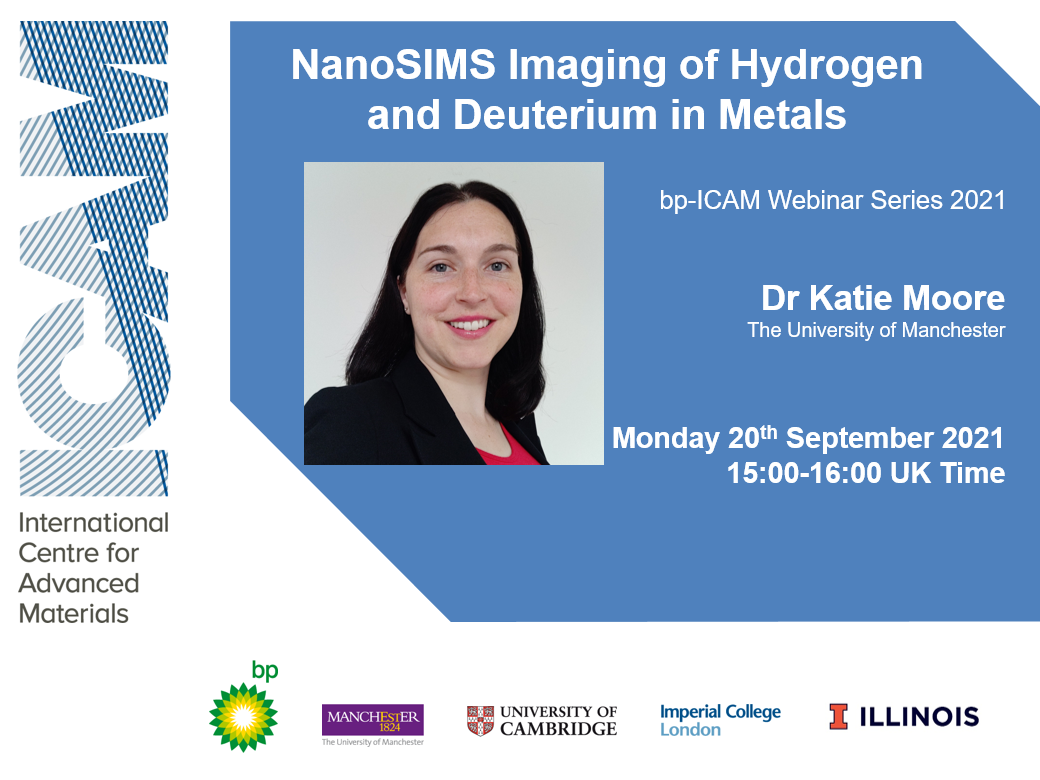
The NanoSIMS is emerging as a powerful tool to study complex problems in materials science. The NanoSIMS is a high-resolution secondary ion mass spectrometry instrument capable of chemical mapping at 100 nm spatial resolution, detection limits in the ppm range and is able to detect almost all elements in the periodic table as well as isotopes.
In this seminar Dr Katie Moore will show how her research group has been using the NanoSIMS to image localised deuterium in electrochemically charged steel and nickel alloys as well as in zirconium alloys oxidised in an autoclave to simulate nuclear reactor conditions. She will explain how isotopic tracers, such as 18O and deuterium, can be used to avoid imaging artefacts and provide temporal information. Some of the complexities associated with detecting hydrogen and deuterium in the NanoSIMS will be discussed.
If you can’t make it to the live event, a recording will be made available on the bp-ICAM YouTube channel shortly afterwards. This channel has many of bp-ICAM’s previous webinars, including June’s talk from Professor Manish Chhowalla on “Catalysis Using Metallic 2D Materials”
BIO
Dr. Katie L. Moore is a Senior Lecturer in Materials Characterisation in the Department of Materials. She joined the University of Manchester in October 2014 as Research Fellow in Materials Characterisation by NanoSIMS. She moved from the University of Oxford where she held an EPSRC Postdoctoral Research Fellowship working on NanoSIMS imaging of trace elements in crops. Prior to this Katie graduated with a D.Phil from the University of Oxford in Materials Science in 2011 and a MEng in Materials Science in 2007 also from Oxford University.
Katie has been working in the field of NanoSIMS analysis since 2008. Her research has been primarily to use the NanoSIMS to investigate trace element uptake in crops, such as arsenic uptake by rice and iron in wheat grain, but has also used the NanoSIMS on a wide range of other materials.
More recently Katie’s work has focused on hydrogen and deuterium detection with the NanoSIMS. This has included an investigation of oxidation and hydrogen pick up mechanisms in zirconium and hydrogen embrittlement of steel and nickel alloys.
September 20 2021



